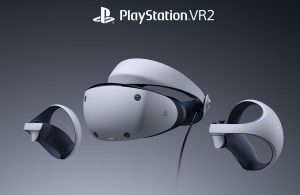Sony's first PlayStation VR for the PlayStation 4 hit stores at the right price at the right time and ended up being one of VR's biggest hits. The PlayStation 5's PlayStation VR2? Not so much, unfortunately. In either an effort to clear unsold inventory, an attempt to revitalize the platform, or both, Sony has announced it's dropping the price of the headset significantly.
Starting in March, the main SKU of the headset will drop from $550 to $400 in the US. Europe, the UK, and Japan will also see price cuts to 450 euros, 400 pounds, and 66,980 yen, respectively, as detailed on the PlayStation Blog. Strangely, the bundle that includes the game Horizon: Call of the Mountain (originally $600) will also drop to the same exact price. That's welcome, but it's also a little bit difficult not to interpret that as a sign that this is an attempt to empty inventory more than anything else.
The headset launched in early 2023 but has suffered from weak software support ever since—a far cry from the first PSVR, which had one of the strongest libraries of its time. It didn't help that unlike the regular PlayStation 5, the PSVR2 was not backward-compatible with games released for its predecessor.
About a year ago, there were reports that Sony was temporarily pausing production because it wasn't able to move the inventory it already had. Later, the company released an adapter and some software for getting it running on PCs. That made it one of the most attractive PC VR headsets, at least on paper. However, setup was clunky, and some features that were supported on the PS5 weren't supported on PC.
PSVR2 games are still getting announced and released, but the VR market in general has slowed down quite a bit in recent years, and most of the remaining action (such as it is) is on Meta's Quest platform.



 Loading comments...
Loading comments...
